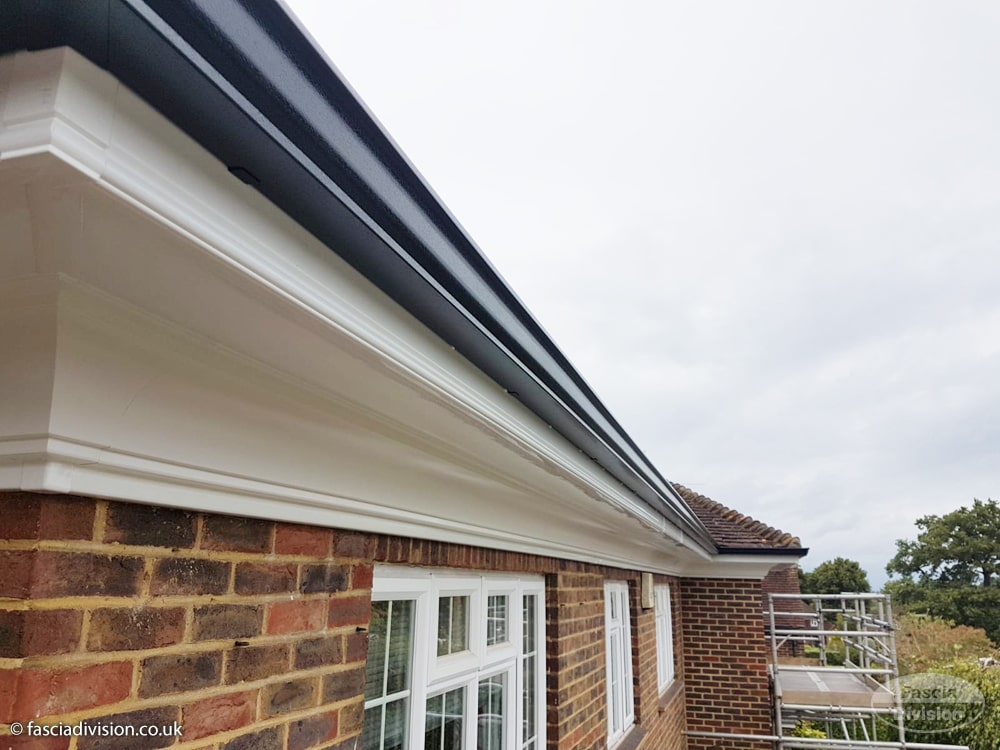
8
July10 Things That Your Family Teach You About Upvc Fascias
Understanding uPVC Fascias: A Comprehensive Guide
uPVC fascias are a vital component of contemporary roof and exterior design, serving both practical and aesthetic functions. This article explores what uPVC fascias are, their benefits, installation processes, maintenance, and a comparison with other materials.
What are uPVC Fascias?
uPVC, or unplasticized polyvinyl chloride, is a type of plastic typically used in building applications due to its toughness, versatility, and resistance to ecological elements. Fascias are the board that runs horizontally along the roofing's edge, typically situated below the roof's edge and above the eaves. They act as a support for the lower edge of the roofing system and help in the mounting of the gutter system.
Key Functions of Upvc Fascias (just click the up coming website):
- Structural Support: They provide stability to the roofing's structure.
- Visual Appeal: Available in numerous styles and colors, uPVC fascias enhance the structure's exterior look.
- Water Management: By functioning as a part of the gutter system, they assist carry rainwater far from the home.
- Pest Barrier: They assist prevent bugs and birds from nesting under the roofline.
Benefits of uPVC Fascias
uPVC fascias have actually gotten popularity over traditional wooden fascias due to various advantages:
1. Sturdiness
uPVC is resistant to decay, rot, and warping, making it a lasting solution for fascias that can withstand harsh weather.
2. Low Maintenance
Unlike wood, which needs routine painting and sealing, uPVC fascias are virtually maintenance-free. A simple wash with soap and water is generally all that is needed to keep them looking new.
3. Cost-Effectiveness
Although the preliminary expense might vary, the total life-span and minimal maintenance requirements of uPVC make them a more economical option in the long run.
4. Visual Versatility
uPVC is readily available in a wide variety of colors and surfaces, including wood textures. This flexibility permits homeowners to select fascias that complement their existing architecture.
5. Environmental Resistance
uPVC is resistant to ultraviolet light, making sure that colors stay stable with time, while likewise being resistant to severe temperature levels, moisture, and insects.
Comparison of uPVC Fascias with Other Materials
To get a better understanding of the advantages of uPVC fascias, let's compare them with two other typical products: wood and aluminum.
| Feature | uPVC | Wood | Aluminum |
|---|---|---|---|
| Toughness | High | Moderate | High |
| Maintenance | Low | High (requires painting and sealing) | Moderate (occasional cleansing) |
| Cost | Moderate | Moderate to High | Moderate to High |
| Aesthetic | Flexible | Timeless, but limited by maintenance | Streamlined, contemporary |
| Environmental Resistance | Excellent | Poor (can rot and warp) | Excellent |
| Installation | Easy | Moderate | Easy |
Installation of uPVC Fascias
Materials Required:
- uPVC fascia boards
- Gutter system
- Fascia brackets
- Screws or nails
- Protective gloves
- Measurement tools
- Saw (for cutting)
- Level
Step-by-Step Installation Process:
- Measure the Area: Accurately determine the length of the roofing edge where the fascia will be set up.
- Cut the Boards: Using a saw, cut the uPVC boards to the needed length.
- Connect Brackets: Secure the fascia brackets to the rafters at routine intervals, ensuring they are level.
- Fit the Fascia Boards: Slide the cut uPVC boards into the brackets and protect them using screws or nails.
- Set up the Gutter: Attach the guttering to the set up fascia for water management.
- Complete Up: Ensure whatever is secure and clean the workspace.
Maintenance of uPVC Fascias
While uPVC fascias need very little maintenance, regular checks are still vital to ensure their longevity:
- Regular Cleaning: Wipe the fascias down with a wet cloth and mild detergent to eliminate dirt and debris.
- Examination: Periodically examine for any indications of damage or staining.
- Inspect Gutters: Ensure that the guttering system is clear of clogs to avoid water damage.
Often Asked Questions (FAQs)
1. How long do uPVC fascias last?uPVC fascias can last approximately 20 years or more when installed and kept properly.
2. Can I paint uPVC fascias?While it is possible to paint uPVC, it is not typically necessary. If you want to alter the color, it's best to replace them rather of painting.
3. Are uPVC fascias eco-friendly?uPVC is recyclable, and numerous makers have actually started utilizing recycled materials in their production, making it a more sustainable option.
4. How do I understand if I need to replace my fascias?Indications that you need to replace your fascias include visible rot or damage, sagging, or an obvious drop in your roofline structure.

5. Can I install uPVC fascias myself?Yes, if you are comfortable with DIY projects and have fundamental tools, you can set up uPVC fascias yourself. Nevertheless, employing a professional is a good idea for those not familiar with roof structures.
uPVC fascias have actually ended up being a necessary component for homeowners and home builders, combining performance, toughness, and visual appeal. With minimal maintenance requirements and cost-effectiveness, they represent a modern solution to roof needs. Comprehending their advantages and installation procedures can help homeowners make informed choices for their properties. Whether reconditioning an existing home or constructing a new one, uPVC fascias benefit consideration for their numerous advantages in preserving roofing system stability and enhancing visual appeal.



Reviews